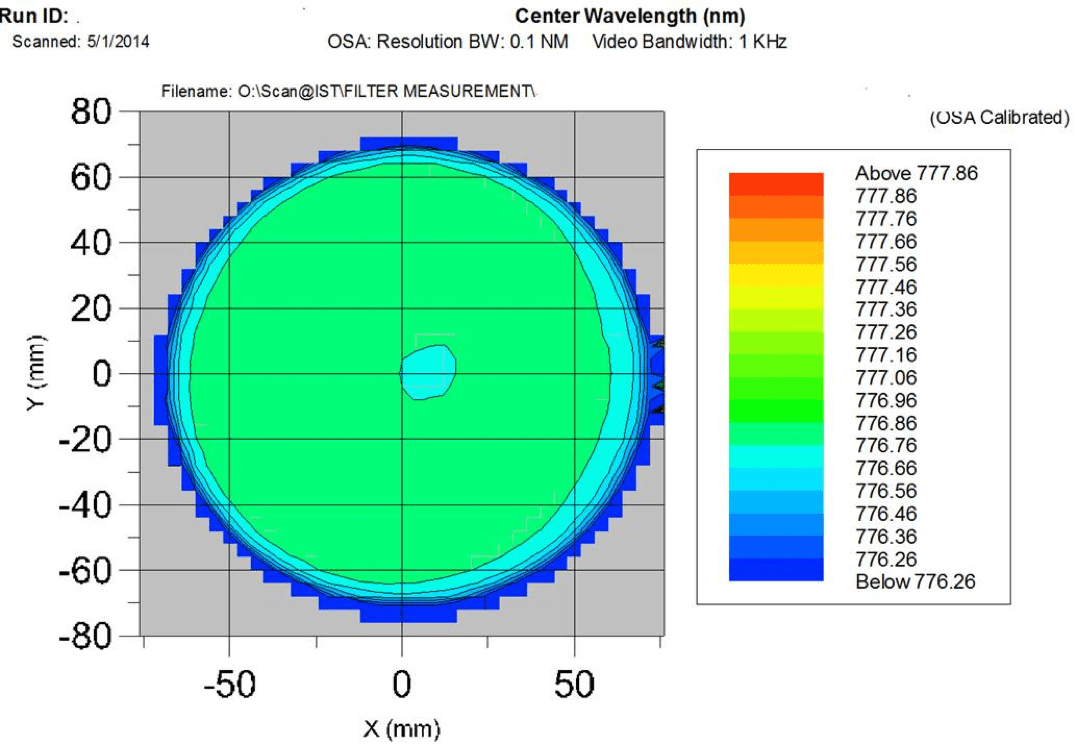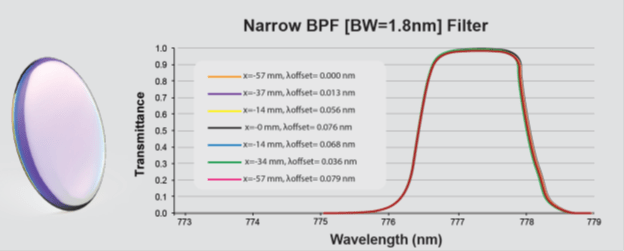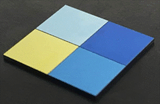
The view from outside often provides unique insights into an environment as it can be extraordinarily difficult to objectively observe a system from within. Once the ability to “slip the surly bonds of earth” was established in the 1960’s it quickly became a race to exploit the ability to observe our earth from above by deploying satellites with capabilities for earth observation (EO). From the first space-based multispectral imager (MSI), Landsat-1, launched by NASA in 1972 to the current proliferation of constellations of commercial cubesats, EO systems rely on the ability to differentiate the optical signal of interest from the noise, often employing wavelength selective optical filters for this purpose.
By their nature optical filters provide wavelength selectivity to the instruments in which they are employed. In EO systems, single selective wavelength bands are often necessary to allow observation of unique spectral characteristics representative of specific phenomena of interest exploiting unique wavelength bands that are reflected, transmitted, or absorbed from different atmospheric and terrestrial constituents with different chemical compositions.
Optical filters provide can provide wavelength selectivity to these systems either as single band-pass filters (BPF) to interrogate one wavelength region of interest or as multi-zone filter (MZF) arrays that can turn a single detector into a multi-spectral device capable of analyzing different wavelengths and the associated phenomena of interest.
Multi-zone Filter Arrays help turn single detectors into multi-spectral imaging devices where different rows of pixels will image and detect different wavelength selective science bands of interest.
MZFs at Iridian can be manufactured by patterning and depositing individual zones on a monolithic substrate, by mechanical assembly of individual bars into a single robust array (“butcher-block”), or by a hybrid approach combining both assembled zones with patterned features (such as black seam or letterbox coatings) or true hybrids where patterned zones are assembled together into a larger “butcher-block” array.
Typical MZF array performance requirements include:
- narrow passband regions with high transmittance (Tx) within each band
- deep and broad out of band and band-to-band blocking
- steep edges to provide a sharp transition from Tx to blocking
- small and controlled zone-to-zone transition widths to maximize usable pixels
- typically <50um for patterned arrays and <200um for “butcher-block” arrays
- robust to survive in orbit (solar radiation durability)
- durable array construction to survive rigors of launch
Single Band Filters enable the receiver (imager/detector) to selectively receive a specific wavelength band of interest. An example is ESA’s Meteosat Third Generation (MTG) lightning imager instrument selectively detecting an oxygen triplet absorption line at 777.4nm by use of a highly uniform, narrow BPF optical filter.
(The above mentioned NBPF has been developed under a contract with Leonardo S.p.a for the Lightning Imager Instrument, in the frame of the ESA program Meteosat Third Generation (MTG).
Typical BPF requirements include:
- narrow passband regions with high transmittance (Tx)
- deep and broad out of band blocking
- steep edges provide a sharp transition from Tx to blocking
- high uniformity (these filters are often (up to 150mm diameter)
- excellent transmitted wavefront error and surface quality
- preserves image integrity
- robust to survive in orbit (solar radiation durability)

Figure 1.Spatial variation in CWL across 125mm diameter demonstrating highly uniform large NBPF

Space Heritage
Iridian has produced individual filters and multi-spectral elements that have been tested and qualified for a range of orbits and space environments. Iridian is a registered participant in the Canadian Controlled Goods Program.
Examples of space environment testing and qualification that our filters have passed include:
- Radiation exposure (gamma rays, protons, combined solar UV and electrons)
- Thermal cycling/shock/survivability including liquid N2 to boiling ethanol dips
- Vibration testing
- Laser damage testing in excess of 1 MW/cm2
- Thermal vacuum cycling testing from 50K to 450K
- Outgassing testing as per ASTM-E595
- Reliability as per MIL-C-48497A
Iridian has over 20 years of experience producing industry leading optical telecommunication and datacom filters for terrestrial systems. This communication filter expertise is combined with a space heritage providing filters flown in satellite applications such as earth observation and is supported by a dedicated Aerospace and Specialty Optics group to guide customers from initial specification and design through to full volume production from our Ottawa, Canada facility.






